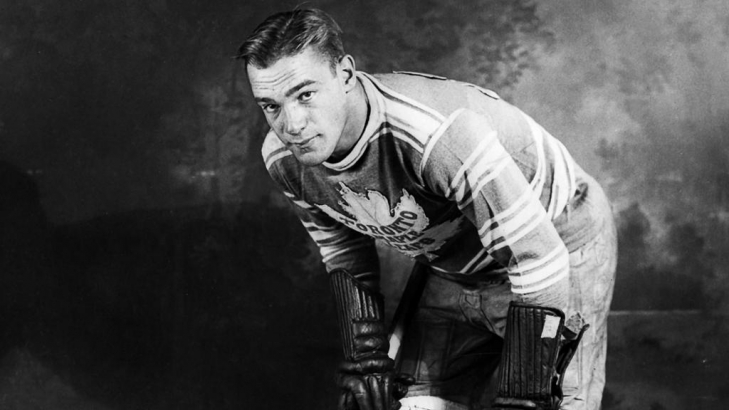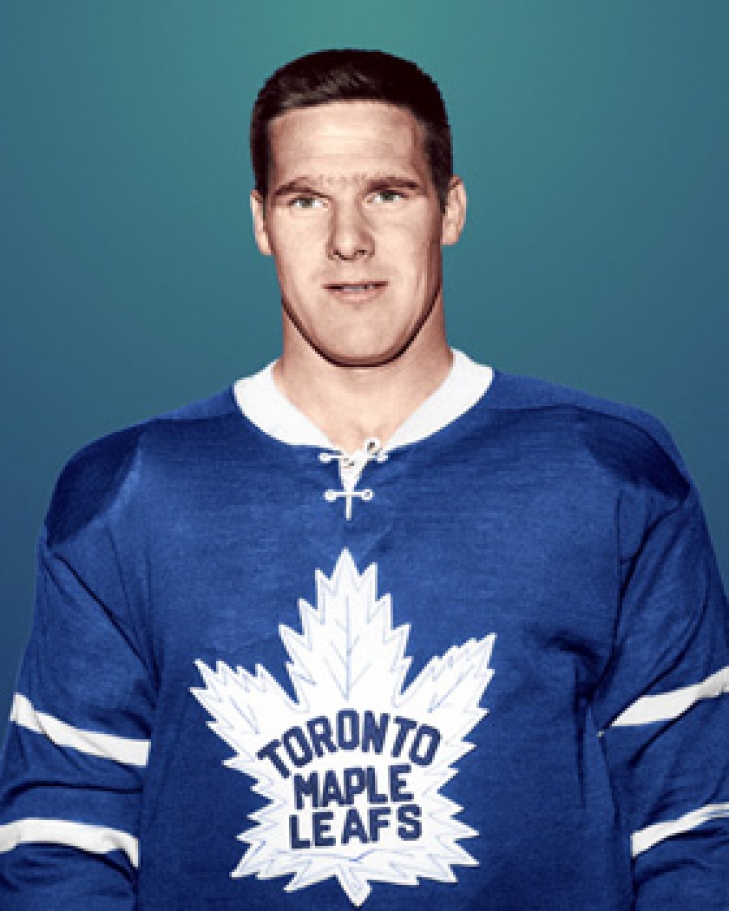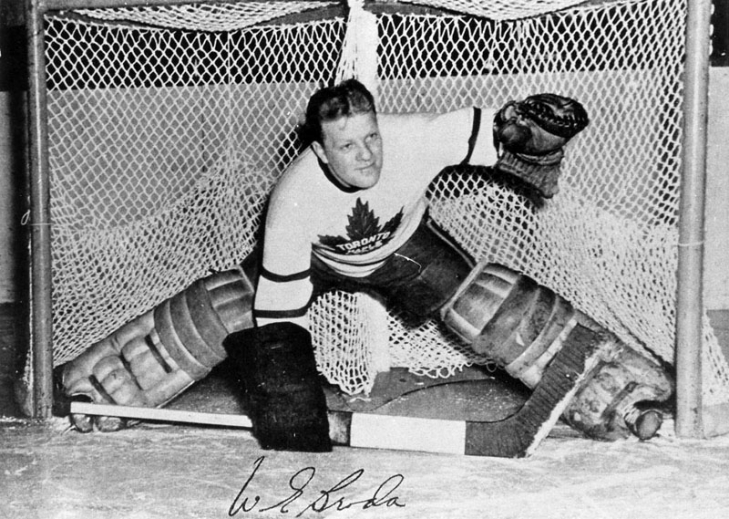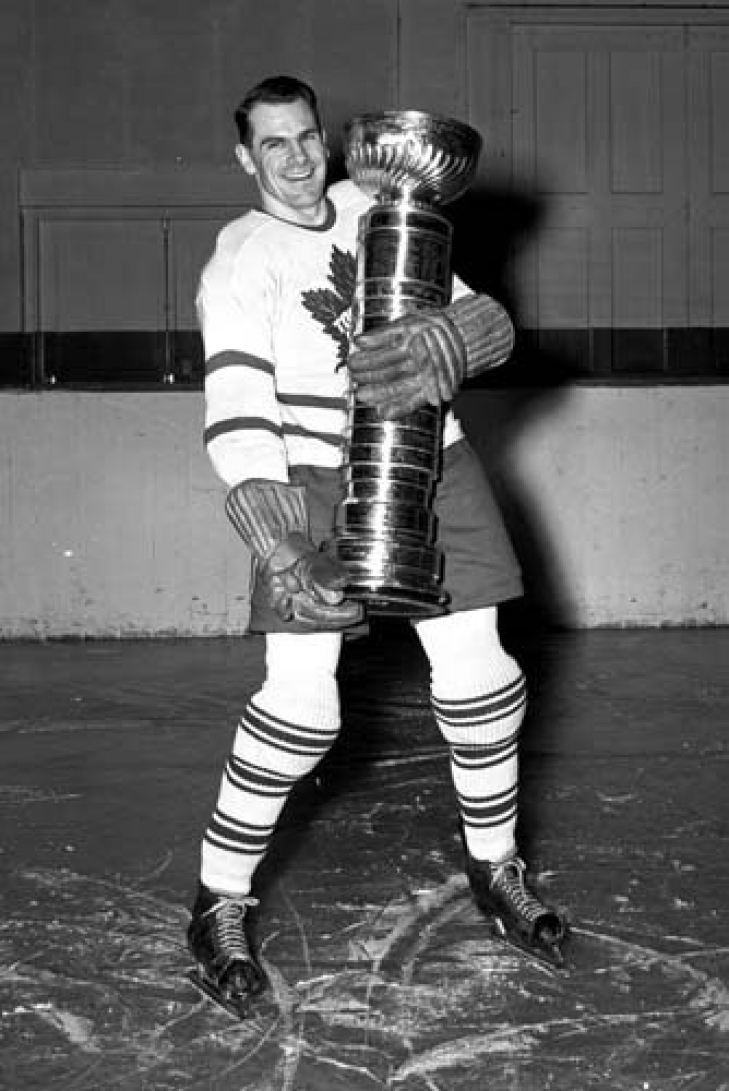
Committee Chairman
4. Charlie Conacher
A strong argument can be made that the first true power forward in hockey was Charlie Conacher, and at the very least, he was one of the first to define the role.
Conacher was a dynamo in junior, leading the Toronto Marlboros to two Memorial Cup wins (1928 & 1929). Conacher stayed in Toronto as a pro, signing with the Maple Leafs, and he rapidly became a star, scoring a goal in the opening game in the 1929-30 season.
The Canadian earned the nickname of the “Big Bomber," using his strength and powerful shot to terrorize opposing netminders. Taking Toronto to a Stanley Cup in 1932, Conacher became the first player to lead the NHL in Goals five times, and he was also a First Team All-Star three times and a Second Team All-Star twice. Conacher was also the runner-up for the Hart Trophy in 1934-35 and was a two-time scoring champion. Considered to be the top Right Wing in the first half of the 1930s, his bruising style caught up with him, and injuries piled up.
Conacher was traded to the Detroit Red Wings, and as a Maple Leaf, he scored nearly a Point per Game (324 Points in 328 Games).
Conacher entered the Hockey Hall of Fame in 1961, and he was part of the group that had a banner honored by the Leafs in 1998. His #9 (along with Ted Kennedy) was officially retired by Toronto in 2016.
3. Tim Horton
Tim Horton played his first 20 Seasons in the NHL with the Toronto Maple Leafs, where his physical strength and toughness set him apart from the other Defenseman.
Horton debuted in 1950 and was a Second Team All-Star in 1952-53. He could drop the gloves and intimidate when needed, though he was not a player who drew penalties, often considering his physical style of play. Horton had a phenomenal decade in the 1960s, where he anchored Toronto to four Stanley Cups, was a First Team All-Star twice, and a Second Team All-Star three times. Horton finished in the top-four in Norris voting six times and was the runner-up twice.
In 13 different years in Toronto, Horton was in the top ten in Defensive Point Shares, and he led the league in that advanced metric twice (1953-54 & 1962-63). As of this writing, he is seventh all-time in DPS.
Horton was traded to the New York Rangers in 1970, and he later played for Pittsburgh and Buffalo, where his career ended following his death from a car accident. He was elected to the Hockey Hall of Fame in 1977, with the Leafs honoring him in 1995. His number #7, which he had sometime after fellow honoree, King Clancy was officially retired in 2016
2. Turk Broda
Turk Broda played his entire NHL career with the Toronto Maple Leafs, and with all due respect to everyone else who wore the blue and white in between the pipes, it is Broda who is the most important.
Broda’s professional career began with the Detroit Olympics in the minor leagues, but his path to the NHL would not remain in the Motor City. The Olympics sold his contract to his hometown Maple Leafs, and he would become Toronto’s starting Goalie going into the 1936-37 season.
The Torontonian proved to be a top Goalie, and in the 1940-41 season, Broda won his first Vezina and would lead the Maple Leafs to a Stanley Cup win the year after. It was a special championship in sports, as the Maple Leafs became the first team to overcome a 3-0 Finals deficit to win the title. Broda’s work on the ice took a two-and-a-half-year detour due to World War II, but he returned better than ever.
Broda led Toronto to four Stanley Cups (1947, 1948, 1949 & 1951) in five years, winning a second Vezina in 1948. Age caught up to Broda in 1951, as he played in only 31 Games, and after appearing in only one contest in 1951-52, he retired from hockey with a career record of 304-222-102.
Broda was inducted into the Hockey Hall of Fame in 1967, and in 1995, his banner was hung to the ACC's rafters. Toronto officially retired his number #1 in 2016.
1. Syl Apps
If you look at the top ten that we came up with, we could make a case for any one of them as the best Toronto Maple Leaf of all time. Not only that, when you have a team with a long history and fervent fanbase of Toronto, you will likely find a list that has one of those men at the top. After what felt like weeks of analysis, we settled on Syl Apps as the greatest Maple Leaf ever.
Apps was an outstanding athlete who won the Gold Medal at the 1934 British Empire Games and would later be sixth at the 1936 Olympics. The multi-sport athlete was courted by the Toronto Maple Leafs to play, and he made immediate history as the first-ever Calder Trophy winner as the NHL's best rookie.
As a rookie, Apps led the NHL in Assists and did so again in his second NHL season. While the Center never won the Hart, from 1938-39 to 1942-43, he was either second or third in the balloting for the most coveted individual trophy in hockey. Apps also led Toronto to a Stanley Cup win in 1942.
Apps missed two seasons as he joined the Canadian Military for World War II, and the Center came back, still an elite player, where he led the Leafs to Stanley Cups in 1947 and 1948. The ’48 Cup win would be his final game in the NHL, ending a ten-year run all with Toronto.
Amazingly, he only had 56 Penalty Minutes over his career, and as such, Apps won the Lady Byng in 1942, was the runner-up for it twice, and the second runner-up another two times. While we again concede that there were others who could easily slide in at the top here, can anyone state emphatically that Apps shouldn't be number one? Not emphatically. Not a chance.
And, yes, we think we would have written those last three sentences had we gone with one of the others we considered for number one. This is how tight it was.
Apps entered the Hockey Hall of Fame in 1961, and his name was one of the first honored in the Air Canada Center in 1993. In 2016, his number 10 (which George Armstrong also had) was officially retired by the Leafs.





